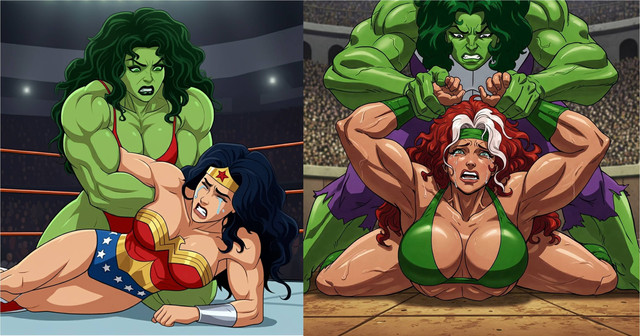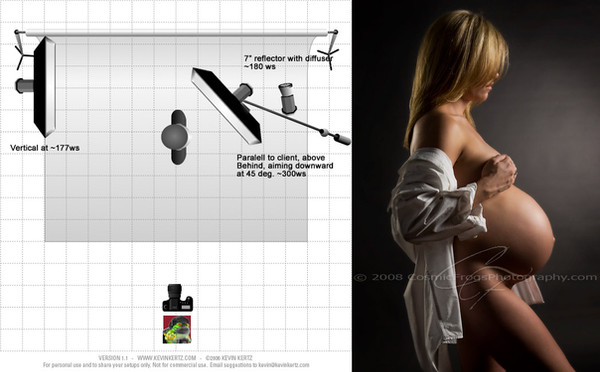HOME | DD
 Simon-P — Studio Lighting 2
by-nc-nd
Simon-P — Studio Lighting 2
by-nc-nd

Published: 2008-12-09 21:51:43 +0000 UTC; Views: 28317; Favourites: 202; Downloads: 5424
Redirect to original
Description
Title: Studio Lighting 2For :
Photography Copyright Simon Pole lighting module Copyright Kevin Kertz
This may be downloaded and used for reference purpose.
Unfortunately, the host has removed the page containing the lighting module.
Difficulty: Beginner-intermediate
Part 2. Low key soft light Portraiture/Glamour
Intention:
Casual soft light portraiture using a plain black background and keeping it pure black.
The light falls back on the model and falls off toward background keeping it black.
If the model is two far forward you will get deep shadowing around the eyes.
Model position.
At least 6 feet/2 m from background to prevent light spilling on background.
Method and metering
Softbox 1 tilted slightly forward away from background metered f5.6 for 1:1 ratio (flat lighting f4 for 2:1 ratio for added contrast and soft shadow.
Softbox 2, tilted slightly forward away from background metered f5.6
Lighting models hair with a directional light (snoot with honeycomb grid) pointed down from rear right (in this example)
Models with blond/light hair may not need a hair light, models with dark hair a hair light is recommended if available.
Meter background, because of light position, direction and distance from background, you should get a reading of f0 or very close to f0, giving you a pure black background.
Camera position can be anywhere in a 45º arc in front of model
Metering process:
Incidental at models eyes.
Meter Softbox 1 f5.6 or f4/f2.8 (if you want a bit more of a ratio)
Meter Softbox 2 f5.6 (key light)
Meter hair light f5.6
Meter background f0 (out of cameras tonal range at f5.6)
Variant: If you only have two lights, the hair light (snoot) can be left out, which will work with a light haired model.
Light meter settings:
Incidental, ISO 100, 1/125, f5.6 (or you preferred setting)
Shutter and f stop can differ this must the reflected in your metering.
This type of lighting is a little more tricky and relies on the position of the model relative to the two softboxes, light falls back onto model, if the model is too far forward you will get deep shadowing in the eyes and any other recessed parts.
Related content
Comments: 13

i was wondering whats the different between the bulb watts and the output watts. I am looking into buying studio lighting and havent got a clue on what to get.
👍: 0 ⏩: 1

Flash light output is measured as a guide number, sometimes referred to as GN, the higher the guide number the higher the light output of the flash
[link]
The wattage rating is the measurement of electrical current in watts per second (Ws), lights with a higher wattage rating may be more powerful with a higher GN, they will probably also recycle faster, but a 500w head isn't double the light output of a 250w head, just double the electrical output.
👍: 0 ⏩: 0

They are flash heads, which I believe you call strobes in the US, but are basically the same thing.
The ones used here are Bowens Esprit Gemini 500's
Info here.
[link]
👍: 0 ⏩: 1

well.. what I am asking. are you flashing all of them at the same time or using some as model lights?
👍: 0 ⏩: 1

They are all fired simultaneously via radio trigger or IR slave unit.
The modelling light is only used as a modelling light and has no effect on the end lighting result.
👍: 0 ⏩: 1

hmm. not sure what IR slave unit is.. but when it comes to radio triggers. and that's probably going to sound stupid, but is there receivers out there that connect to all four or more lights at the same time or need to get one for each light?
👍: 0 ⏩: 1

If your lights can fire as slaves (most can) you need one radio transmitter for the camera and one receiver for a single light the other lights will fire as slaves to the one triggered by the radio trigger, if your lights aren't light sensitive then you will need a radio reviver for each.
An IR slave/transmitter fires a low level light pulse that fires the lights when the slave cell is active, it is the cheapest wireless option but has its limits, requires line if sight, so it can be obstructed by objects where radio isn't.
👍: 0 ⏩: 1

oh nice.. yes, you are correct. they do.
Its my second day messing with the studio lights. I just got them and learning on the go. the ones I got came with no instructions and I feel like a blind kitten pocking around in the dark..
I actually just learned that I don't even need a trigger. that my D80 build in flash can trigger strobes as well. just not sure its the right way to go as I just blew all 3 of my fuses... not sure if its related to syncing with the camera build in flash...or I did something else wrong. your thoughts?
👍: 0 ⏩: 1

Yeh I believe the Nikon D70/80 etc can fire a flash/reduced flash to fire studio heads, I find it hard to believe that would cause blown fuses as its just a pulse of light to activate the slave sensors, much in the same way an IR slave would.
I don't use Nikon so I cant say from experience.
If you are blowing fuses I would think that there must be another cause, unfortunately I'm not able to offer any advise other than if it keeps happening to have them checked out by an expert.
👍: 0 ⏩: 0

This tutorial has been collected in *PhotoLust 's favourites gallery (home of loads of brilliant tutorials) and has also been featured in December's journal . Thanks for making such a great resource!
👍: 0 ⏩: 1

Thanks, Studio Lighting 3 is also now up
[link]
👍: 0 ⏩: 0

























